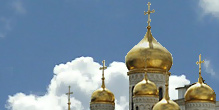 |
 |
|
|||
|
Held in Nicea, Asia Minor in 787. Under Empress Irene. 367 Bishops were present. The Iconoclast ControversyIt centered around the use of icons in the Church and the controversy between the iconoclasts and iconophiles. The Iconoclasts were suspicious of religious art; they demanded that the Church rid itself of such art and that it be destroyed or broken (as the term "iconoclast" implies). The Council's Proclamation"We define that the holy icons, whether in color, mosaic, or some other material, should be exhibited in the holy churches of God, on the sacred vessels and liturgical vestments, on the walls, furnishings
Published - January 2011
Recommend this page to your friend! |
|